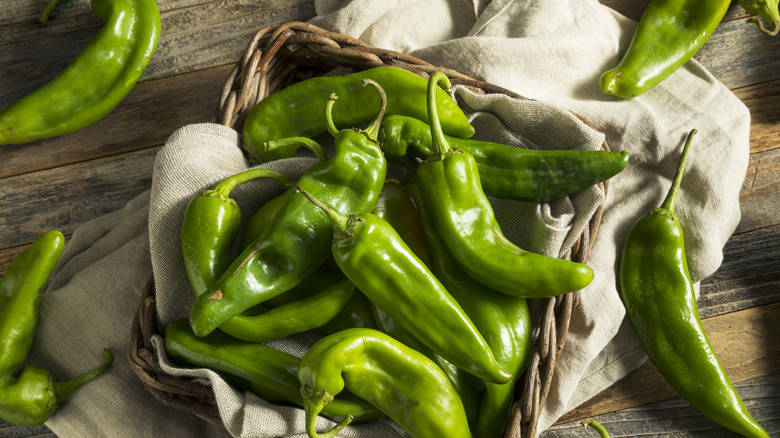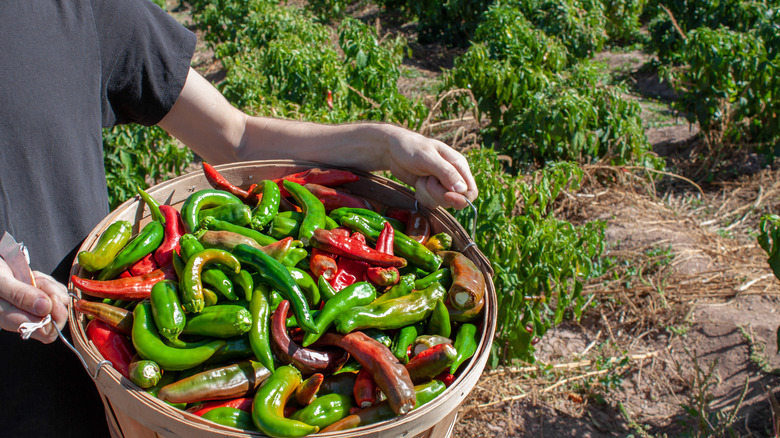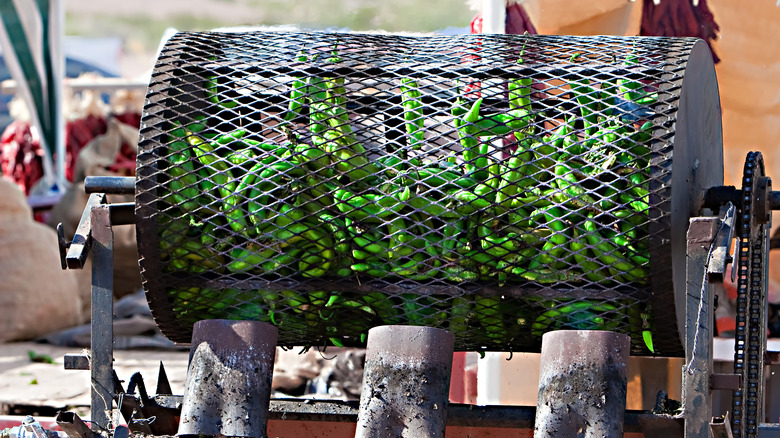What Makes Hatch Chiles Unique?
There are more than 50,000 different kinds of chile peppers now grown around the world, though they all started in the Americas, according to ChilePeppers.com. In fact, the Chile Pepper Institute, part of New Mexico State University, marks the birthplace of chile peppers as the lowlands of Brazil, an area that still to this day is home to the most wild species of chile peppers. Interestingly, all of the domesticated peppers we eat today fall into only five species of peppers: Capsicum annum (containing jalapeño, poblano, and bell peppers), C. chinense (habanero), C. frutescens (Tabasco), C. baccatum (aji peppers), and C. pubescens (Manzano).
Much of the discussion about chile peppers inevitably makes its way to heat. The Scoville Scale, created in 1921 by Wilbur Scoville, measures the heat of different varieties of peppers, which is expressed in SHUs, or Scoville Heat Units. Some cultivators of peppers breed for heat, competing to create the hottest peppers imaginable, a distinction currently held by Pepper X, which comes in at 3.18 million SHU. The jalapeño, for reference, is around 10,000 SHU. Other pepper cultivators breed for flavor and suitability for a given climate. That's how the famed Hatch chiles were born.
Hatch chiles have a sense of place
Usually, when you encounter the word "terroir," you're about to be subjected to a long-winded explanation about how grapes grown in certain soil and climate taste different than grapes grown elsewhere. Turns out, terroir doesn't just apply to grapes but also chile peppers. In fact, 505 Southwestern says, "The Hatch Valley is truly the Napa Valley of green chile." Located in New Mexico, the Hatch Valley is an agricultural region that straddles the Rio Grande River from Arrey, New Mexico, in the south to just south of the tiny town of Hatch, New Mexico, in the north. Known for its fertile volcanic soil and its big diurnal temperature swings (meaning hot days and cool nights), Hatch Valley is green chile central.
Hatch chiles are several different chile pepper varieties, all part of the C. annum species and all bred specifically to grow in the Hatch Valley. New Mexico State's Chile Pepper Institute explains that around the turn of the 20th century, horticulturist Fabian Garcia began working on breeding chile pepper varieties that would suit the New Mexican growing conditions. His first commercial cultivar that took off was New Mexico No. 9, and this 1913 variety provided the genetic base for all Hatch chiles (per Chili Pepper Madness). Hatch chiles comprise several varieties: NuMex Big Jim (the Guinness world record holder for biggest chile pepper at 13.5 inches long), NuMex Sandia, and NuMex Joe E. Parker.
What do Hatch chiles taste like?
Hatch chile peppers range in heat levels from mild to spicy, and the hottest Hatch variety is the relatively new Lumbre, which can reach 10,000 SHU, according to Specialty Produce. All Hatch chiles are edible raw, but they're almost always roasted to make removal of the relatively thick skin easier. And as for the flavor, there's a reason why they're so sought after. Bon Appetit describes them as " like no pepper you've had before: it's sweet and smoky, it has a slight funk to it and a grassiness that makes it always taste like it's freshly picked. Like a jalapeño with more of a character arc."
And it's that unique flavor that swells the population of tiny Hatch, New Mexico, each year for the annual Hatch Chile Festival. The 1,517 residents of Hatch (via World Population Review) welcome 30,000 visitors over the late August to early September celebration that features vendors and chile roasting, among other events (via Hatch Chile Fest). If you happen to inhabit one of the other 49 states, don't despair. Hatch chiles can be found online from vendors like the Hatch Chile Store and even from grocery store chains like Wegman's and Albertson's that host Hatch chile roasting events. There's also a Hatch Chile Finder that can help you locate these delicious chile peppers near you.


